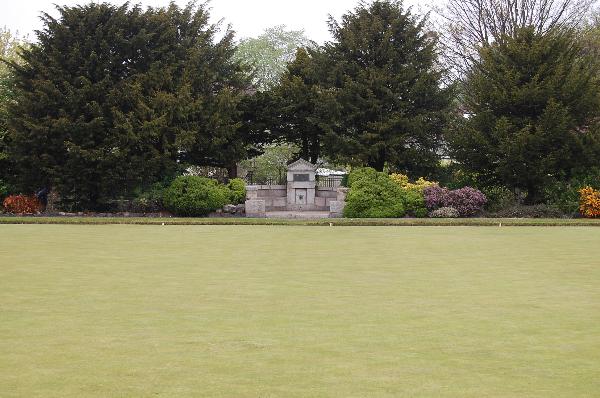Wells of Bon-Accord - The Gibberie Wallie Traditional Cache
Wells of Bon-Accord - The Gibberie Wallie
-
Difficulty:
-

-
Terrain:
-

Size:  (micro)
(micro)
Please note Use of geocaching.com services is subject to the terms and conditions
in our disclaimer.
This cache is part of a series of Wells around Aberdeen. Here is a history for all the wells in this series.
There were no easy means of getting water to homes and settlements in ancient times, so people chose to make their homes and settlements next to the water. Water could, of course, be moved short distances in pots and other receptacles but this was not practical for longer distances, especially when the time could be better spent farming the land and looking after livestock.
It became apparent that cattle thrived at certain watering holes and very quickly these watering holes had a reputation. This was before the Celts came along, who believed each and every watering hole had a spirit or guardian protecting it and the watering holes were actually a place of worship in a way. The Celts were very wary of the water horse that we often refer to as a kelpie, it would lure unsuspecting people to their death, so not all of their water guardians were nice ones!
Like many other cultures who believed and worshipped a variety of spirits and guardians, offerings were often made to these water guardians in order to keep giving the people plentiful supplies. Putting these offerings into the water itself though, led to the water being contaminated and people were well aware of that so they would leave offerings nearby the water supply or nail a coin to a tree which became a very common offering and is still seen today in superstitious places.
The area we know today as Aberdeen attracted people due to the river Don and river Dee which both have many many burns and streams as well as lochs nearby too. This resulted in a lot of wells being built or formed and we can still see some of them today. Each well had its own superstitions which stemmed from the belief of the guardians protecting the well and most were believed to have certain healing properties. The wells rumoured to have the most sought after cures and reliefs resulted in a wealthy and successful neighbourhood and businesses sprang up round about the well. I will try and include the information about the particular superstitions of each well as I write about them, although some have very little information available.
Original credit for this series goes to doodledogs who put out these caches with information obtained from the Aberdeen Town and County HIstory Society, following their move back from these caches, they kindly offered them to me for adoption and I snapped them up as one of the first series of caches I did when I started caching in 2014. A lot of caches back then included a historical aspect which seems to have been lost in the more recent approach of just putting a cache out so I wanted these caches to survive. I will resurrect some of the other well caches that have unfortunately been archived.
The Gibberie Wallie
The Firhill Well stood at the bend of a lane leading from what now is Sunnybank Road to what now is Bedford Road. It takes its name from being located near a fir-clad hill. It is not known who built the Well but it was in existence as early as 1721. Well before spray can graffitti.
The Gibberie Wallie or Firhill Well was originally in a rural Location at Firhill. It was on the edge of a mound in a lane leading to the Hermitage that was surrounded by the King's College Wynd and probably have been named after this fir clad mound which lay near the Snow Kirk Burial Ground. It is known to be in use prior to 1721. It was moved to its location in the Sunnybank Sports Ground on Sunnybank Road in 1937. The Well lies to the rear of a bowling green in a lovely setting. However it is not accessible as the gate is usually locked. It is a lovely horseshow shape which would have allowed people to sit normally on the upper tier and have a fair old 'Cleck' or 'Gibber' while they waited their turn to collect slow pouring Water for domestic use. Fit i'ye gibberin' about noo ye gibberin' eediot?
A more favoured theory is the regular sale of Gingerbread at the Well - allegedly referred to locally as Gibberie not Gingerbreed.
The Firhill Well once sprang iron rich water from the base of the Little Firhill (removed by sand quarrying in 1860’s - now the location of the University’s heating plant), to the west of College Bounds. In 1721 John Forbes drank some of the spring water, and found it helped his gallstones.
The area around the spring was known as the ‘Bog of Sunnyside’, but the water was claimed by local farmers also to have cured various ailments (including asthma, conjunctivitis and stomach pains). In 1798, thanks to public donations, a stone fountain was built to collect the springwater, and the Firhill Road was laid for easier access. The spring’s popularity greatly increased both from pilgrims for its healing powers, and as a meeting place for the young. Wooden seats supplemented the semi-circular stone benching on either side of the wellhead, and the consumption of the water had to be rationed. Between 1815 and 1830 Baubie Courage (infamous for the methods used to enforce her monopoly, and for breaking the Sabbath) sold gingerbread at the springs, which consequently became known as the Gibberie Wallie. - whaur aul’ Baubie Courage eest tae sell her gibrie.
Information kindly obtained from: http://mcjazz.f2s.com/AncientWells.htm as well as a variety of books and other resources including maps at the Scottish Library.

Additional Hints
(Decrypt)
Gval, gb gur yrsg bs gur ybpxrq tngr nobhg 4/5 srrg hc